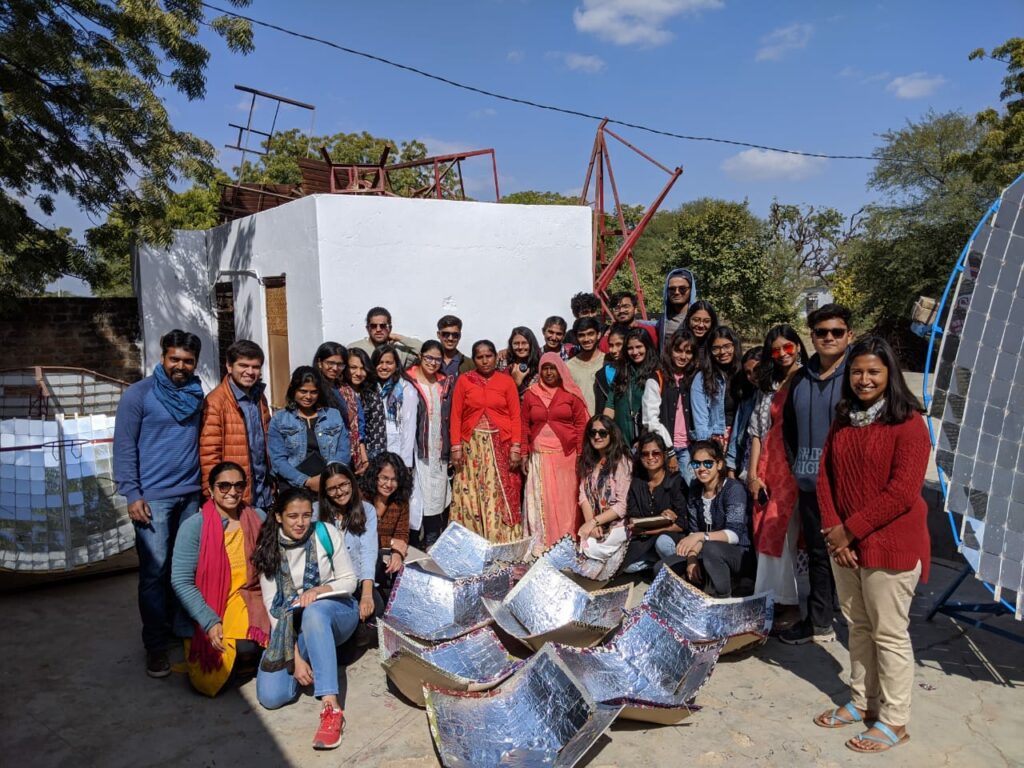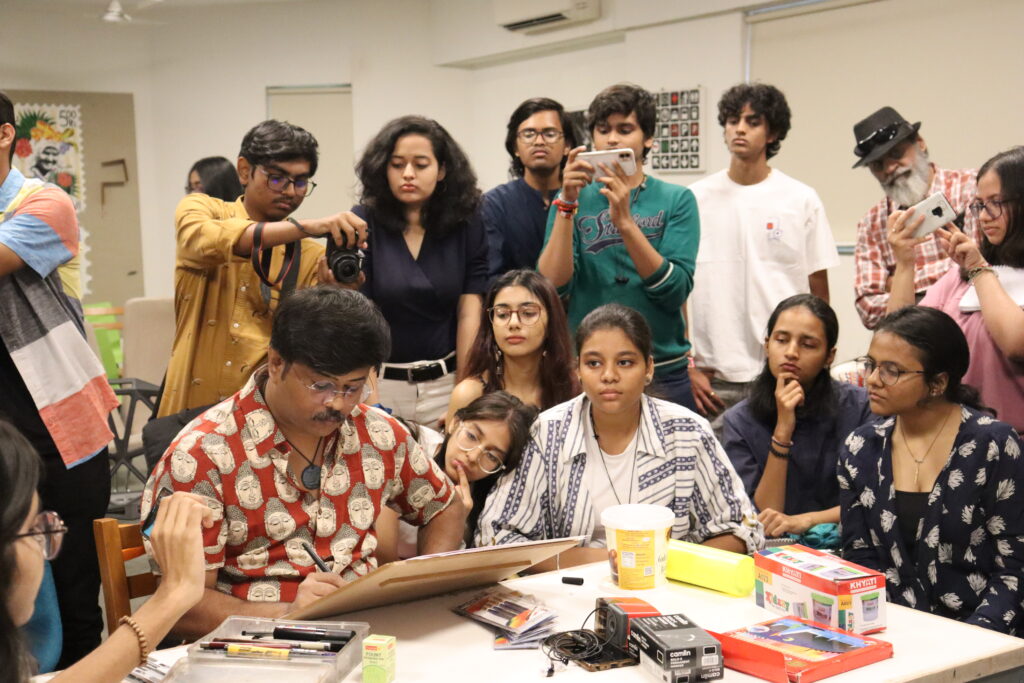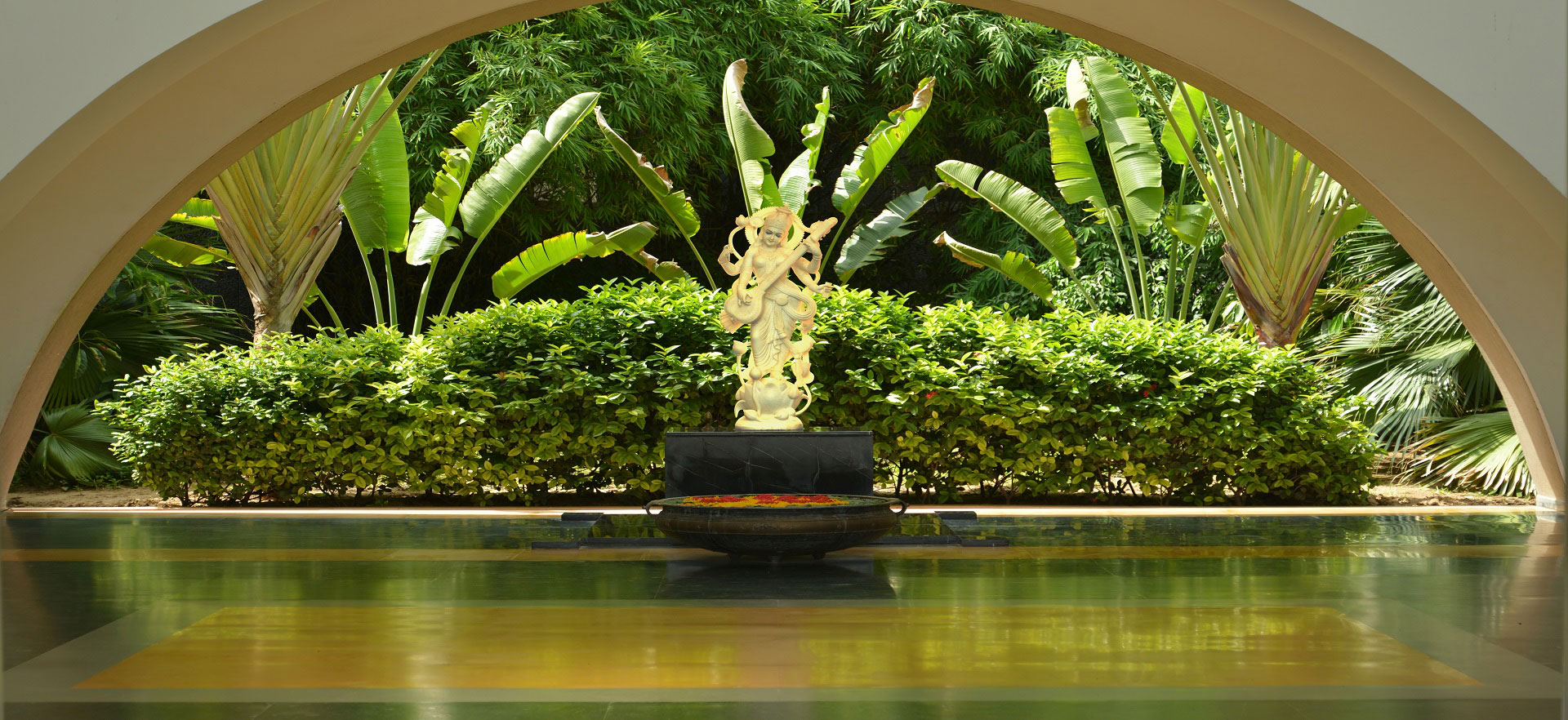

Design is a critical aspect of human culture and society and plays a vital role in shaping our world. In today’s rapidly changing environments, design education is becoming increasingly important. Designers are needed to create new products, systems, and solutions that are both functional and aesthetically pleasing.
Institute of Design offers two programmes in design – Product and Interaction Design and Communication Design. The aim is to prepare students for a career in the design industry by providing them knowledge and skills they need to succeed. The learning begins with a common foundation year, after which students proceed towards their chosen programmes from the second year onwards. There is an intense 15 weeks of engagement each semester in studios, classrooms, workshops, and through fieldwork. Industry exposure is a crucial component of design education and thus our programmes are industry-focused, giving many opportunities for engagement and interaction with industry experts.
Our Philosophy
The philosophy for both programmes is centred around the idea of creating purposeful and meaningful designs that serve the needs of society while embracing creativity, innovation, and experimentation. The institute emphasises strengthening design principles, techniques, and methodologies. It prioritises a human-centred approach to design and strives to focus on cultural and contextual needs to design solutions that are tailored to user requirements.
The institute focuses on sustainable and ethical design practices to make the students aware of the impact their designs have on the environment and society. The institute also promotes collaboration and interdisciplinary learning.
Design Pedagogy
At the Institute of Design, Students will learn in five engaging ways:
In the Studio: Studios are large work areas where you will have space to draw, paint, make simple models and display your work so there is rich interaction and collaborative learning with fellow students and teachers. Studios facilitate learning by doing which allows you to explore design problems through multiple iterations and quick prototypes.
Through Classroom Interactions: Studio explorations are blended with didactic sessions, such as lectures and demonstrations, in the ‘traditional’ classroom format.
Workshops: Short, intense learning sessions are conducted through workshops with subject experts and professional designers from various specialisations.
Field Immersions and Industry Visits: An important component of learning design lies outside the campus. Hence visits to manufacturing units, professional studios and museums, and monuments form an essential part of the pedagogy. Longer immersions in rural areas and field visits within Ahmedabad are also included in various courses.
Internships: Regular internships help students to have sustained exposure to the world of work so that they can connect their academic courses to the real world.
About the Programmes
Product & Interaction Design: The Product & Interaction Design curriculum encompasses various sub-disciplines. Mechanical product design, intelligent product design, furniture design, package design, CAD design, 3D printing, prototyping, and other multidisciplinary areas have all been included in this programme. This course has been designed to teach students how to tackle practical design problems.
Programme Duration: Semester 1-8 (4 years)
Foundation Year: Semester 1-2
Programme Specialisation: Semesters 3-8
Communication Design: Communication Design is the art and practice of designing written and visual materials for a specific audience to transmit information, ideas, or messages.
Programme Duration: Semester 1-8 (4 years)
Foundation Year: Semester 1-2
Programme Specialisation: Semesters 3-8
Internships
The undergraduate programme in design aims to provide creative and market-relevant training to students so that they may get exposure to the profession and be capable of starting their entrepreneurial ventures. For this, the Institute of Design has included three internships in Years 1, 2, and 3 of four, six and eight weeks. This ensures that students have sustained exposure to the world of work, they can connect their academic courses to the real world, and build their skills and capabilities accordingly. The internships also give updates to the academic community regarding curricular changes required to keep the programme relevant to market needs. The students get a chance to work with organisations in the fields of digital media, manufacturing, retail industry, social organisations, independent design studios, educational services, advertising and media services, Government bodies, etc.
The BDes programme has three internship opportunities:
Semester 8 is a 4-month long project which may be sponsored by industry, NGOs, or self-initiated by the student in response to an urgent societal concern.
The Placement Cell
The Institute trains and provides full placement support to the students. The placement model at Institute is a four-stage process, involving pre-placement activities, career guidance, and executing placement and post-placement reviews.
In addition to providing placement support to the students, the institute also facilitates training of students in the organisations during summer and winter vacations, project work for the students in the final year, continuous institute-industry interactions, alumni activities, participation in exhibitions, fairs, seminars and conferences, counselling of the students on job opportunities, facilitating industry visits and inviting distinguished speakers.
 Meaning in English -“From ignorance, lead us to truth”
Meaning in English -“From ignorance, lead us to truth”
The motto of the university has been taken from Brhadaranyaka Upanishad – I.III.28. The second line of the Pavamana Mantra explains how to lead the life towards knowledge from ignorance which obscures our mind in understanding the reality. As the only remedy from darkness is light, the only remedy from ignorance is knowledge.
 Our Vision
Our VisionShaping a better future for mankind by developing effective and socially responsible individuals and organisations.
Student Centricity
Contribution to the Society
Quest for Academic Excellence
Quality Statement
To develop high-quality

या कुन्देन्दुतुषारहारधवला या शुभ्रवस्त्रावृता
या वीणावरदण्डमण्डितकरा या श्वेतपद्मासना।
या ब्रह्माच्युत शंकरप्रभृतिभिर्देवैः सदा वन्दिता
सा मां पातु सरस्वती भगवती निःशेषजाड्यापहा
Meaning – Salutations to Devi Saraswati, Who is pure white like Jasmine, with the coolness of Moon, brightness of Snow and shine like the garland of Pearls; and Who is covered with pure white garments, Whose hands are adorned with Veena (a stringed musical instrument) and the boon-giving staff; and Who is seated on pure white Lotus, Who is always adored by Lord Brahma, Lord Acyuta (Lord Vishnu), Lord Shankara and other Devas, O Goddess Saraswati, please protect me and remove my ignorance completely.
श्लोक अर्थ – जो विद्या की देवी भगवती सरस्वती कुन्द के फूल, चन्द्रमा, हिमराशि और मोती के हार की तरह धवल वर्ण की हैं और जो श्वेत वस्त्र धारण करती हैं, जिनके हाथ में वीणा-दण्ड शोभायमान है, जिन्होंने श्वेत कमलों पर आसन ग्रहण किया है तथा ब्रह्मा, विष्णु एवं शंकर शङ्कर आदि देवताओं द्वारा जो सदा पूजित हैं, वही सम्पूर्ण जड़ता और अज्ञान को दूर कर देने वाली माँ सरस्वती हमारी रक्षा करें।